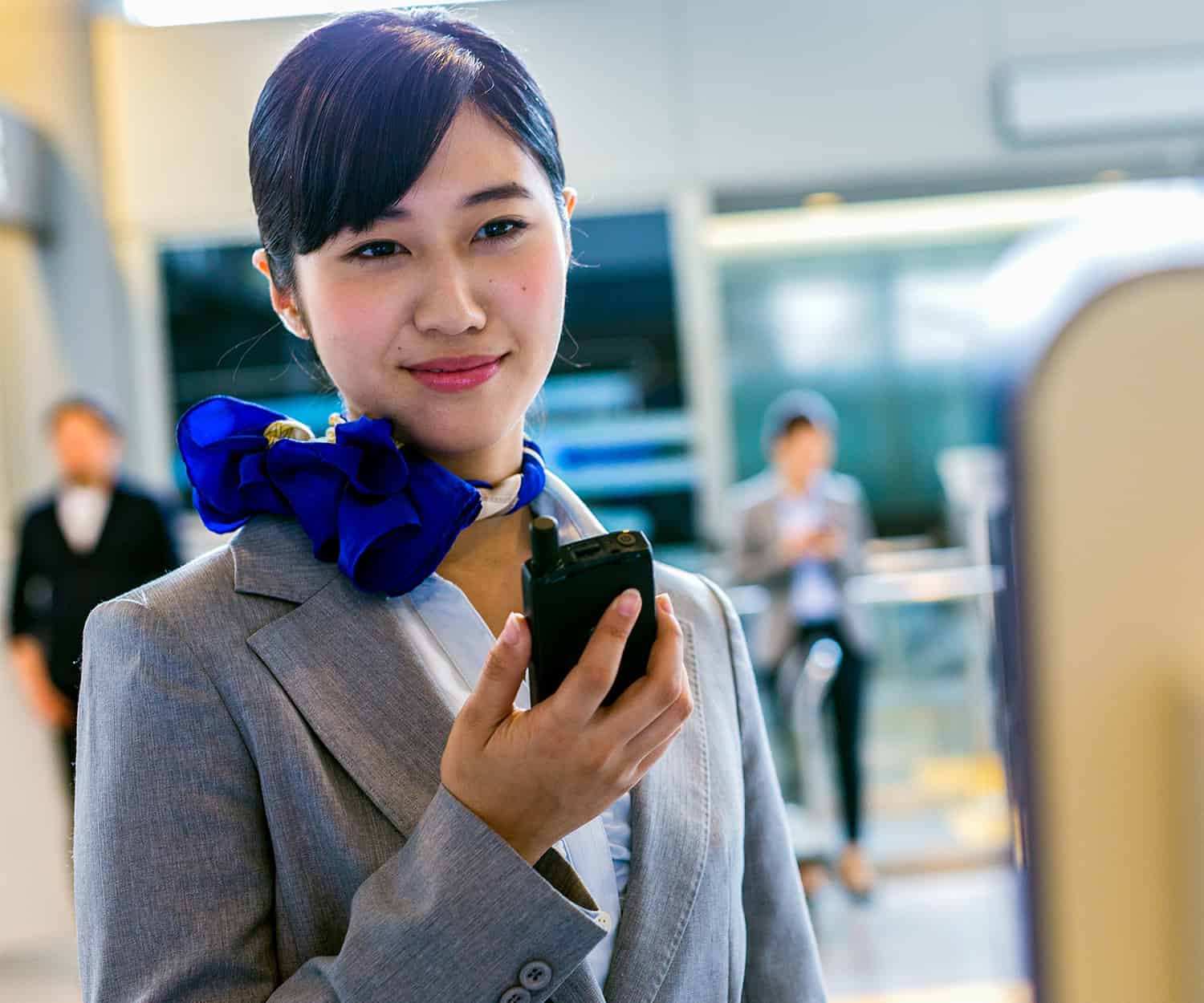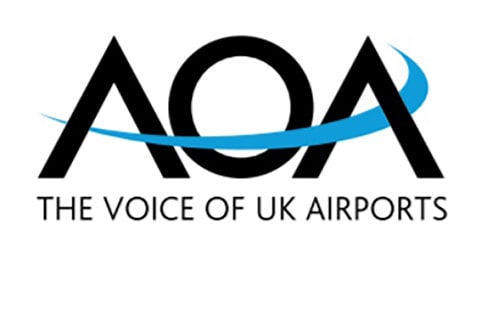The 5 C’S of Radio Communications in Aviation.
Despite the surge in smartphone use in the workplace, radio communications in aviation have remained the dominant technology; this is particularly apparent when you consider the many hundreds or thousands of workers at an airport.
Why is this? Two-way radios are designed for the job. Not only are they rugged and durable, with extremely long battery life and loud, clear audio but they also offer a secure and reliable network in a time when we are facing the need for heightened security and communication simply cannot fail.
From check-in desks through to security, boarding gates and the runway themselves your users may work in high noise environments, on extended shifts, outdoors in the hot and cold, or in dangerous environments that require intrinsically safe devices across an airport.
Different user cases may require devices that can be used with gloves, include displays or operate hands-free. Supervisors may not carry a radio but need to interoperate with radio users from a smartphone. Purpose-built radios designed for specific use cases can meet all of these needs balancing the practicalities of sometimes harsh working environments with the need for a sleek design for passenger-facing employees. From extra loudspeakers, noise-cancelling microphones, glove-friendly ergonomics, extreme temperature ratings, purpose built accessories, intrinsically safe models to integrated smartphone PTT applications such as WAVE PTT that ensures individuals and teams are connected regardless of the device they are using.
The Benefit of Radio Communications in Aviation – Complete Resiliency
The 5 C’s are the basics of what makes Professional Mobile Radio (PMR) such a widely-used communications tool, with more than 40 million two-way radios in use globally.
In case of a mobile network overload, you need to be sure your staff will be able to communicate on their radio network or in direct mode. Systems can be designed to be resilient from redundant backhaul
links at remote radio sites to redundant system controllers and back-up power. Plus radio always has the fall-back of direct mode/simplex/talkaround operation,
so communications can occur directly between hand portable radios in a peer to peer fashion without the need for infrastructure.
Efficiency and Productivity Capabilities.
Modern, IP-enabled MOTOTRBO digital radio systems offer data capabilities. Radio systems might not provide broadband data speeds, but they allow you to deliver data services within your custom designed coverage area, with the capacity you need, without facing additional data airtime cost and give you precisely the control you need. So with data capabilities, what more can you do?
- Connect multiple sites locally or globally with software infrastructures such as MOTORBO Capacity Max (DMR Tier III) or Motorola Solutions WAVE PTX
- Monitor biometric data such as the heart rate of workers, by connecting sensors to radios via Bluetooth
- Send status alerts, callouts and text messages (free form and one-touch canned messaging)
- Coordinate work order tickets for example sending aircraft engineers or cleaning services to a plane immediately after it has touched down to ensure fast turnaround times
- Set up telemetry and SCADA to let your machines talk to each other to maintain everyday operations and quickly identify security breaches
![]()

The 5 C’S of Radio Communications in Aviation.
1. Coverage.
Designed to meet specific requirements, whether it is a single terminal or a multi-site airport facility encompassing offsite parking, aeroplane hangars and maintenance facilities as well as multiple passenger and cargo terminals and on to the runways.
2. Control
High degree of control over system requirements, design, priorities, security, and operation – allowing a system to be configured for a specific use case.
3. Capacity.
Engineered to address peak usage, using dedicated licensed spectrum and right-sized to each airport’s specific needs – so calls always get through.
4. Capabilities.
Features and capabilities that enable safety and productivity for users such as location services, added encryption/security, text messaging, telemetry, radio programming and other enhanced features.
5. Cost.
Predictable costs, with no additional airtime fees like those associated with commercial mobile phone networks.
Safety and Reliability Capabilities.
In terms of safety, DMR (digital mobile radio) shines with its heritage in public safety communications and features like prioritisation to clear communications channels during emergencies,
dedicated emergency buttons on radios to call for help and man-down and lone-worker features to keep your workforce safe.
Let’s work together.
 AOA Members Radiocoms Systems Ltd has a dedicated Aviation and Airlines facilities team based at Heathrow Airport supporting clients globally. Our multi-manufacturer and multi-technology expertise allow us to support the full spectrum of radio communications across varying levels of requirements. By utilising client specific SLA’s and advanced monitoring systems Radiocoms’ will ensure your chosen radio system & operating infrastructure has 100% uptime.
AOA Members Radiocoms Systems Ltd has a dedicated Aviation and Airlines facilities team based at Heathrow Airport supporting clients globally. Our multi-manufacturer and multi-technology expertise allow us to support the full spectrum of radio communications across varying levels of requirements. By utilising client specific SLA’s and advanced monitoring systems Radiocoms’ will ensure your chosen radio system & operating infrastructure has 100% uptime.
Our extensive experience in the design & deployment of radio communication networks and infrastructure will enable your airport/airline to benefit from a communications solution that is resilient and capable of future capacity expansion.
Let’s start a conversation
If you would like further information, or to discuss your requirements onsite:
Book An Appointment | Arrange A Quotation | Call 033 3939 0022
